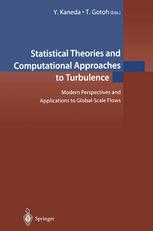

Most ebook files are in PDF format, so you can easily read them using various software such as Foxit Reader or directly on the Google Chrome browser.
Some ebook files are released by publishers in other formats such as .awz, .mobi, .epub, .fb2, etc. You may need to install specific software to read these formats on mobile/PC, such as Calibre.
Please read the tutorial at this link: https://ebookbell.com/faq
We offer FREE conversion to the popular formats you request; however, this may take some time. Therefore, right after payment, please email us, and we will try to provide the service as quickly as possible.
For some exceptional file formats or broken links (if any), please refrain from opening any disputes. Instead, email us first, and we will try to assist within a maximum of 6 hours.
EbookBell Team

0.0
0 reviewsThis volume contains the papers presented at the workshop on Statistical The ories and Computational Approaches to Turbulence: Modern Perspectives and Applications to Global-Scale Flows, held October 10-13, 2001, at Nagoya Uni versity, Nagoya, Japan. Because of recent developments in computational capabilities, the compu tational approach is showing the potential to resolve a much wider range of length and time scales in turbulent physical systems. Nevertheless, even with the largest supercomputers of the foreseeable future, development of adequate modeling techniques for at least some scales of motion will be necessary for practical computations of important problems such as weather forecasting and the prediction and control of global pollution. The more powerful the available machines become, the more demand there will be for precise prediction of the systems. This means that more precise and reliable knowledge of the underlying dynamics will become important, and that more efficient and precise numerical methods best adapted to the new generation of computers will be necessary. The understanding of the nature of unresolved scales then will playa key role in the modeling of turbulent motion. The challenge to turbulence theory here is to elucidate the physics or dynamics of those scales, in particular their sta tistical aspects, and thereby develop models on sound bases to reduce modeling ambiguity. The challenge to the computational method is to develop efficient algorithms suitable for the problems, the machines, and the developed models.